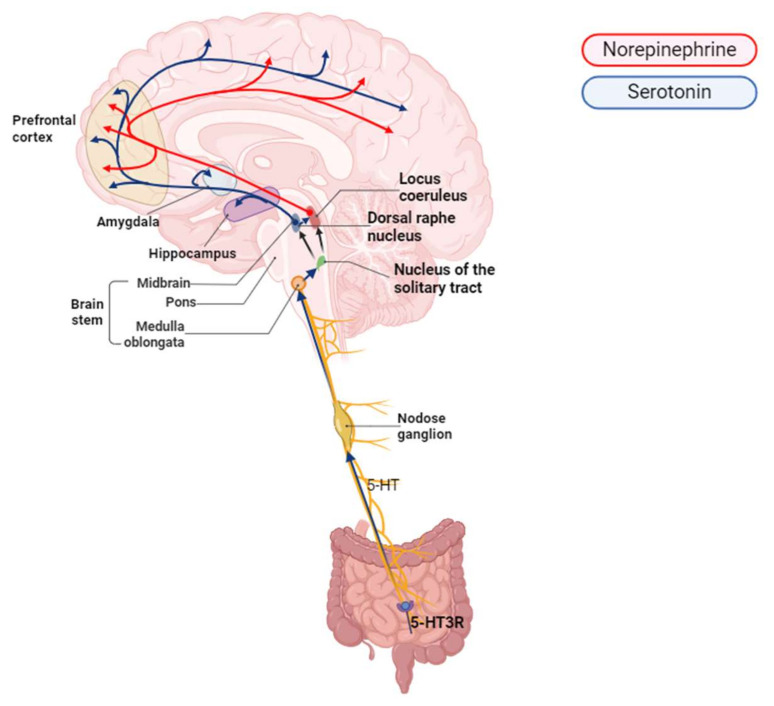Figure 2.
Serotonin and norepinephrine pathways connecting the gut and brain through the vagus nerve. This diagram highlights the dual involvement of serotonin (blue pathways) and norepinephrine (red pathways) in gut–brain communication via the vagus nerve. Serotonin produced in the gut interacts with 5-HT3 receptors located on vagal afferent fibers, transmitting signals to the nucleus of the solitary tract in the brainstem. The nucleus tractus solitarius (NTS) integrates these serotonergic signals and projects them to higher brain regions, including the dorsal raphe nucleus, locus coeruleus, hippocampus, and cortex, where they influence mood, cognition, and stress responses. In parallel, norepinephrine pathways originating from the LC modulate various cortical and subcortical regions, playing a key role in arousal, attention, and immune regulation. The interplay between these neurotransmitter systems is essential for maintaining homeostasis, as serotonin influences norepinephrine release and vice versa, creating a feedback loop that supports adaptive responses to internal and external stimuli.

